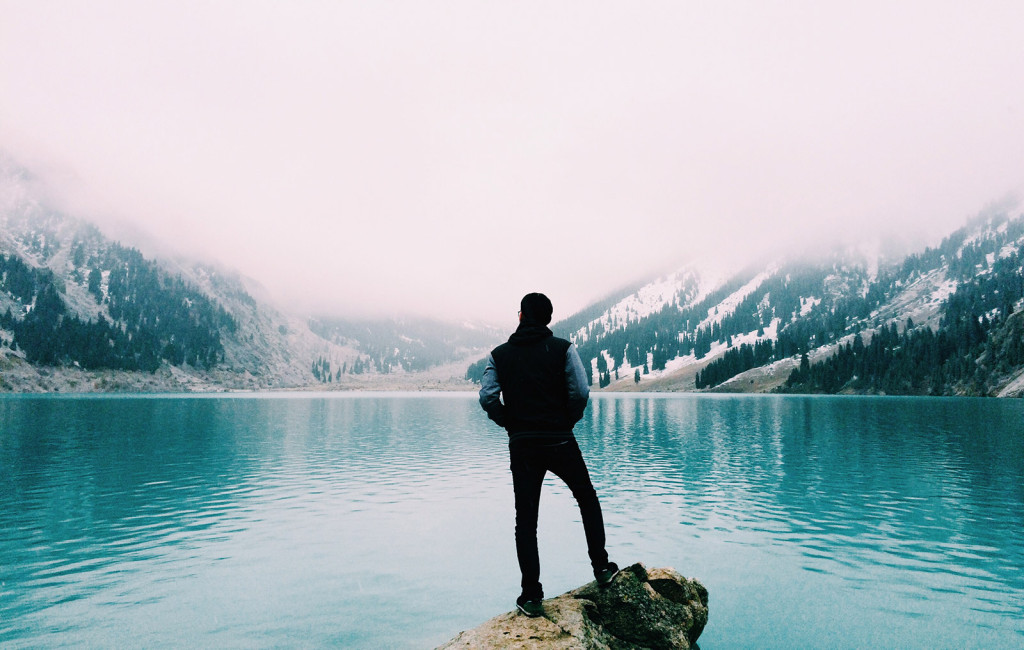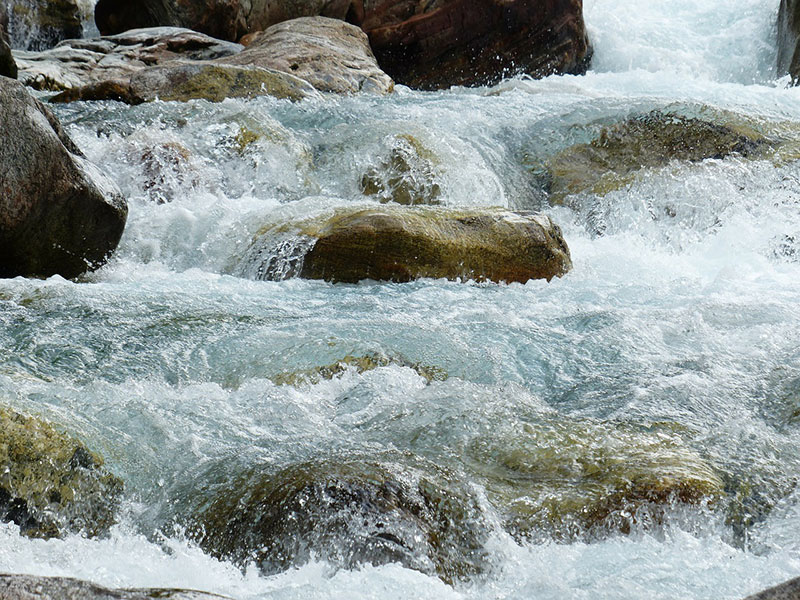We’re not going to waste space here telling you that you need clean drinking water. Even chickens, on some innate level, know they need water. We respect you enough to make the assumption that you have at least the cognitive skills of a chicken, so we’ll move on to more important questions.
Where can you find water? How do you know it’s safe? What do you do if it’s not? Read on …
Find Water
A unique feature of Earth is that it’s water-based. There are lots of ways to access nature’s greatest resource, as every living thing needs to it survive.
Start by moving downhill. Like most things, water follows the laws of gravity. Sources will increase in size the lower in elevation you get, often pooling in low points.
Look for signs of life. Patches of extra vegetation or dark areas in landscapes are indications of water availability. Animal tracks are more prevalent near water. Swarming insects, such as mosquitoes, generally lay their eggs in pools of water. See? Everything needs water, even the jerks.
Lastly, use your ears. In a quiet forest, running water makes a lot of noise. This is an especially helpful tactic if someone in your party needs to shut up and you’re trying really hard not to just hit ‘em.

Create A Water Source
Sometimes, even though you’ve listened like a champ and scoured every patch of vegetation, a water source is just not forthcoming. As you’ve probably noticed, a recurring theme in survival advice is to not give up and die. Survive! If you can’t find a water source, make one!
If you can’t find water but you’ve found mud, that’ll do. Dig a hole in the mud and you’ll find that it soon fills up with filthy, nasty … water!
It may surprise you to hear that both snow and ice contain large amounts of frozen water. Oh, it didn’t? Well, cheers to you – you’re clearly a cut above the rest of us. Just make sure you melt it first. Eating frozen snow can lower your body temperature and have a dehydrating effect.
If you have a plastic bag or a poncho, your preparation will pay off. Tie your plastic up before it rains and funnel the water into a container. Or wrap the bag around the branches of a tree or plant. Plants emit water vapor, so the bag will collect a bit of water in its bottom over time – sometimes almost a full cup in just a few hours. Just make sure the plant isn’t poisonous (check out North America’s most common poisonous plants) … but this goes back to the part where we’re assuming you’re smarter than a chicken.
Another common source of water is morning dew. Collect it by tying rags around your legs and walking through a field of grasses, then squeezing out the rag.
If you’re really in a pinch, boiling seawater or urine and collecting the steam can provide some hydration. If you boiled sea water, you’ll have a great survival story when you make it back to civilization. If you boiled your pee…well, we won’t tell if you don’t.

Is it Safe?
The only way to know for sure that your water is clean is to purify it. That said, there are good rules of thumb that will tell you whether your water is likely safe.
The safest source of water is a clear, flowing stream. The closer you are to the source, the less likely it is to have been contaminated by animal (or human) waste. Rain, tree condensation, and anything you acquired through boiling should also be safe for immediate consumption.
Sources that require purification include large bodies of water and melted snow. Ponds and lakes are stagnant, and large rivers are usually polluted. Snow tends to collect impurities, so always purify it, and make sure water from a mud puddle is filtered and treated.
Make it Safe
When it comes to cleaning your water, there’s a critical difference between purifying and filtering. Filtering is often necessary to remove large impurities, but won’t eliminate microscopic particles like bacteria or viruses. To make your water safe, you’ll also need to purify it.
Filtering is pretty self-explanatory, and there are lots of things you’re likely to have that make excellent filters. A coffee filter from home is a great lightweight tool, but if you’re roughing it, a t-shirt, sock, or even tightly woven reeds can work.
Purification can be performed through boiling, chemicals, or UV sterilization. Boiling is the most basic and requires nothing but a pot and fire. Boiling water for 60 seconds is enough to kill most viruses and bacteria.
Chemical purification has the advantage of speed. A few drops of tincture of iodine or bleach will clean your water without the need for a fire. It can also make the water taste disgusting, which is good for feeling superior to your mollycoddled friends back home.
UV sterilization can be accomplished through use of a tool or by harnessing sunlight. Several UV sterilizers exist on the market, some more portable than others. If you don’t have one, you can leave a clear container of water for 1-2 days in the sun.
After purifying, be sure you’re not consuming untreated water on the outside of your drinking container. Use a small amount of purified water to rinse off that little Giardia parasite clinging to the lip of your bottle. Something nicknamed “beaver fever” might seem like a good time, but trust us on this one.
Now that you know the basics of getting safe, clean water, don’t be a chicken. Get out there and drink your way to success.
For around $82, the Katadyn Vario Water Filter virtually guarantees pure drinking water with almost zero effort.